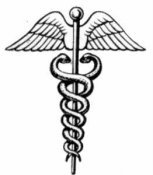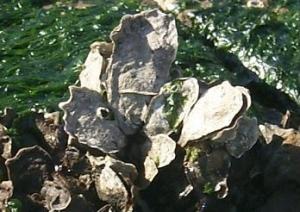 THIS is why we ask our Membership to participate in projects like The Protien Predictor and Rosetta at Home. Even if we do not do the actual hands-on research, the power of multi-computer arrays can provide tremendous computing power at minimum cost to reseachers.
THIS is why we ask our Membership to participate in projects like The Protien Predictor and Rosetta at Home. Even if we do not do the actual hands-on research, the power of multi-computer arrays can provide tremendous computing power at minimum cost to reseachers.
The Human Genome Project was completed in a fraction of the time first predicted.
Just a bit of computer time donated by a large group of concerned people can, and often does, produce remarkable results. Imagine how much sooner we could have read the following release from The Howard Huges Medical Institute, and other medical researchers, if we could get a few more people assisting these scientists in their efforts.
Technique Offers New View of Dynamic Biological Landscape
Source: Howard Huges Medical Institute A new technique for analyzing the network of genetic interactions promises to change how researchers study the dynamic biological landscape of the cell. The technology, which is called epistatic mini array profiles (E-MAP), has already been used to assign new functions to known genes, to uncover the roles of previously uncharacterized proteins, and to define how biochemical pathways and proteins interact with one another.
E-MAP will enable new understanding of how genes and proteins function in the cell, said Jonathan S. Weissman, a Howard Hughes Medical Institute (HHMI) investigator at the University of California, San Francisco (UCSF) and leader of the team that developed the technique. For example, E-MAPs of human gene interactions could enable researchers to optimize drug treatments to patients' genetic backgrounds. It might also be possible to use E-MAP to develop effective combinations of antiviral drugs that target proteins produced by interacting genes. Such a strategy would help to prevent these genes from acting together to compensate for an attack on just one protein, said Weissman.
The researchers, led by Weissman, Maya Schuldiner, a post-doctoral fellow working in his lab, and Nevan Krogan at the University of Toronto, described initial studies of E-MAP in yeast in the November 4, 2005, issue of the journal Cell. Weissman and his colleagues at UCSF collaborated on the studies with researchers at the University of Toronto.
Previous techniques for analyzing epistatic interactions — how the activity of one gene affects that of another — involved altering single genes and analyzing their impact on growth in combination with all other genes in the yeast genome. "The one-to-one method has been an extremely powerful way of studying biological systems,” said Weissman. “But we wanted to approach such analyses in a systematic way and to use the new generation of high-throughput technology to quantitatively explore large numbers of epistatic genetic interactions at once."
The E-MAP technique consists of selectively "dialing down" the activity of a multitude of gene pairs and comparing the effects of those changes to those that result when each gene is dialed down individually. Many genes' activity could be reduced by eliminating them entirely, but for the subset of genes that are essential for yeast growth — whose complete deletion would kill the cell — the researchers invented a high throughput technique to manipulate the half-life of their messenger RNA (mRNA). Since mRNA is a genetic intermediate during the conversion of a gene to protein, reducing its lifespan by mutating the mRNA message lowers the amount of protein the cell can produce. The group called this approach “decreased abundance by mRNA perturbation” (DAmP).
"The DAmP technique gave us a way of lowering the abundance of a target gene's messenger RNA while maintaining its natural regulation," said Weissman. "Most of the mRNAs in yeast have half-lives of ten minutes or so, but our alterations destabilized them to have only a half-life of a couple of minutes. Consequently, they produce five- to ten-fold less protein," he said.
In developing E-MAP, the researchers faced a significant hurdle: Even yeast's relatively modest 6,000 genes would generate nearly 20 million possible gene pairs that would need to be tested. To narrow the number of possible interactions, they adopted a strategy called neighborhood clustering, which restricts analysis to genes that have related functions and that also cluster in one place in the cell. In the Cell paper, they applied the E-MAP technique to a "mini array" of 442 yeast genes that define a biological pathway called the early secretory pathway. This compartmentalized, interconnected pathway synthesizes and regulates lipids and secreted proteins in yeast.
Weissman and his colleagues also needed a way to quantify the epistatic effects of interacting mutant genes on the cells' viability. Since yeast form round colonies when grown in culture dishes, they could measure the mutant cells' colony size in an automated fashion and use that to calculate their growth rates. To determine epistatic effects, they compared the growth rate for each cell containing mutations in two genes with the growth rate of mutant cells carrying mutations in only one of those genes.
"The analysis of these epistatic interactions gave us a unique and coherent perspective on the function and structure of this network in yeast," Weissman explained. "And it also proved a great way to find new gene functions or to figure out how known genes were functioning and the processes they were likely to be involved in. But on top of that, we could identify groups of genes that were acting in a coherent way, to produce protein complexes. And then on a more global level, we could see how the different processes were interacting with each other.
"By contrast, in classical genetics, you begin with a process you're interested in — for example secretion — and look for all the genes that affect secretion. It's a productive approach, but it's very process oriented,” he said. “You might find a given gene that's involved in secretion, but it doesn't tell you about the many other processes it could be involved in.
With the E-MAP approach, however, the researchers start with the gene and ask about all the processes that it affects. “It gives you a less hypothesis-biased, more objective way of looking at the structure of biological systems," Weissman said.
In future studies, Weissman and his colleagues plan to develop better quantitative measures of the effects of epistatic interactions and to extend their technique to other organisms, ultimately to humans.
In addition to offering important basic insights into the roles of proteins and genes, E-MAPs will also contribute to understanding evolutionary processes. “In evolutionary theory, the structure of epistatic gene interactions is critical,” he said. “To understand how different variations, or alleles, of a gene affect an organism's evolution, you have to understand for each gene how it's affected by the genetic background in which it operates.”
Moving beyond the theoretical, E-MAPs might also have a role in clinical applications. "In the field of pharmacogenomics, clinicians seek to tailor drug therapies to an individual's genetic makeup,” said Weissman. “They are essentially asking the very questions about epistatic interactions that E-MAPs can answer. They want to know whether if they inhibit a protein — in this case with a drug instead of knocking down the mRNA — how other genes interact with that inhibition.”
Knowing the interactions a target gene participates in could also enable clinicians to predict the variability of effects of a drug among different people. Understanding such interactions could also give pharmaceutical researchers clues to the magnitude of possible side effects of drugs under development.
The development of combination drug therapies, such as for cancer or viruses, could also benefit from the E-MAP approach. “In such cases, clinicians want to know — if drugs that inhibit each of two proteins slow down a cancer or virus — whether the two proteins interact epistatically, such that inhibiting both produces a much greater effect than the sum of the two,” he said.






